To effectively combat facial tracking systems, you can utilize several communal strategies. First, engage in coordinated masking techniques, such as employing geometric makeup patterns that distort facial recognition algorithms. Next, consider distinctive clothing designs that utilize confusing patterns, like those offered by brands like Cap_able. Community awareness campaigns enhance understanding of surveillance threats, while collective workshops foster informed engagement. Furthermore, the use of temporary tattoos can serve as a dynamic disguise. Explore how each method contributes to a collaborative approach to privacy.
Quick Takeaways
- Organize community workshops to educate members about privacy risks and effective strategies against facial recognition technologies.
- Develop and promote coordinated masking and clothing techniques that disrupt AI detection through unique patterns and materials.
- Launch awareness campaigns, like “Reclaim Your Face,” to mobilize citizens against mass biometric surveillance practices in their neighborhoods.
- Foster collaboration within the community to create innovative solutions that collectively resist digital monitoring systems.
- Use social media platforms to facilitate discussions and share information about privacy rights and anti-surveillance measures.
Coordinated Masking Techniques
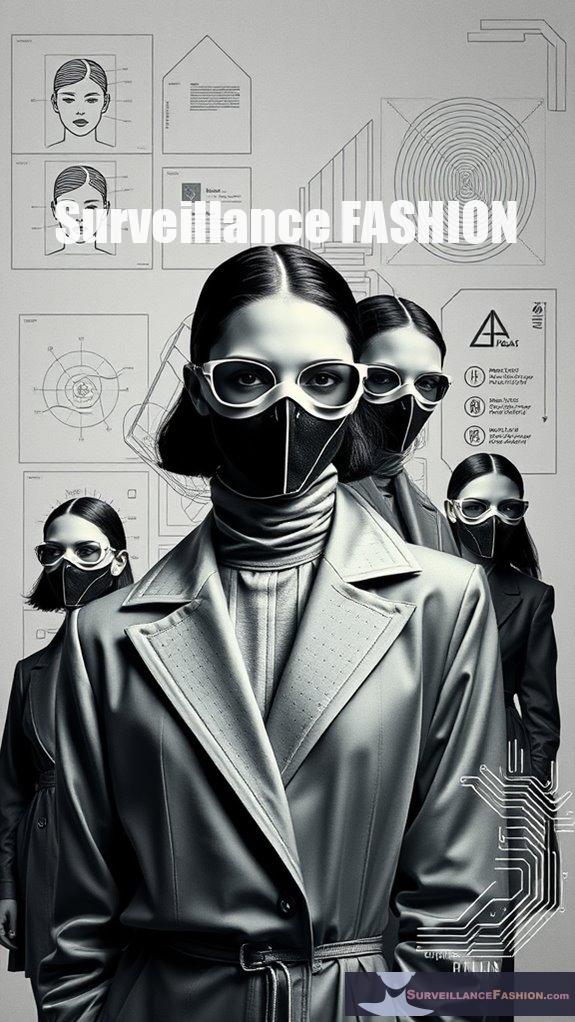
In a world where facial recognition technology is becoming increasingly sophisticated, the implementation of coordinated masking techniques emerges as a crucial strategy for evading surveillance systems. As you navigate this complex environment, it’s essential to understand the limitations posed by advanced detection systems like DeepMaskNet and FaceMaskNet-21, which track facial features even when obscured. Proper mask placement can be detected, diminishing effectiveness, while deep learning algorithms enhance recognition accuracy. However, utilizing lower-resolution images may present a tactical advantage. Furthermore, the development of robust masked face recognition systems has been emphasized to counteract the challenges posed by masks. To increase the effectiveness of these strategies, groups can also employ coordinated anti-recognition makeup techniques to further disrupt facial feature recognition.
Shared Makeup Patterns

Shared makeup patterns represent a fascinating intersection of artistry and technology, where creative expression serves a dual purpose: enhancing personal aesthetics while simultaneously thwarting facial recognition systems.
- The CV Dazzle Project employs unconventional styles to disrupt facial recognition algorithms.
- Geometric shapes, like triangles and squares, obscure facial features and create asymmetry. This approach leverages disruptive design techniques to confuse algorithms that rely on standard facial geometry.
- High-contrast colors, such as blues and purples, challenge the detection of facial boundaries.
- Eye makeup techniques can greatly reduce the effectiveness of facial recognition systems. Juggalo face paint may serve as a practical anti-surveillance measure by obscuring key identification lines on the face.
Group Clothing Strategies
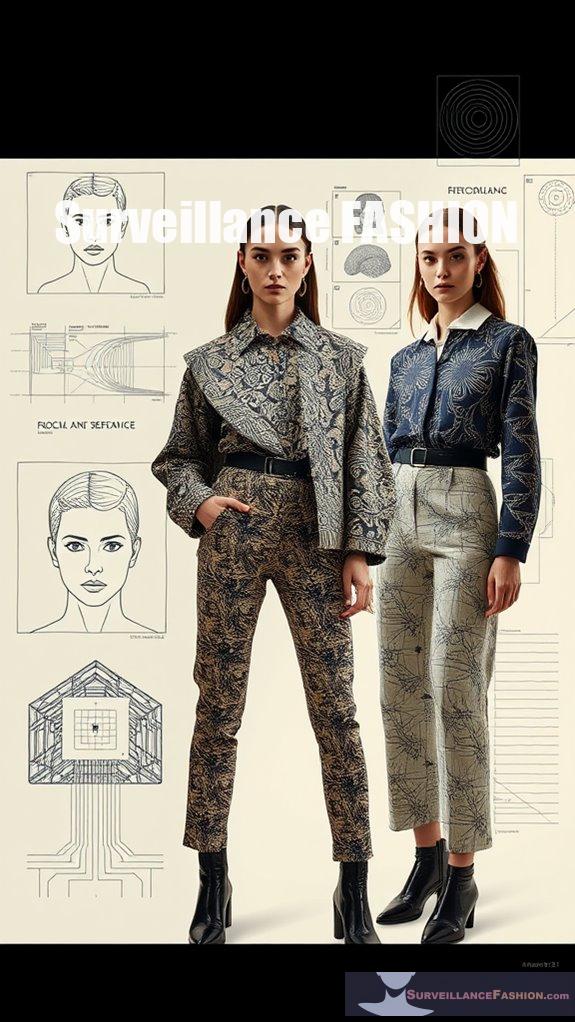
As facial recognition technology becomes increasingly sophisticated, individuals seeking to protect their privacy can explore group clothing strategies that not only serve aesthetic purposes but also function as barriers against surveillance.
For instance, specialized garments, such as shirts adorned with multiple face patterns, effectively overwhelm recognition algorithms by introducing visual complexity.
Fashion lines like Cap_able produce hoodies with animal-inspired designs that disrupt AI detection, demonstrating how style can intertwine with privacy needs. Additionally, the use of pattern-based camera-confusing clothing designs highlights the innovative intersection of fashion and technology aimed at preserving anonymity.
However, while these innovative designs might enhance anonymity, they can attract unwanted attention, challenging their intended purpose.
While innovative designs can boost anonymity, they may inadvertently draw unwanted attention, complicating their original intent.
As surveillance technologies evolve, the fashion industry must continually adapt, ensuring these garments remain effective tools for privacy protection, a necessity emphasized by the mission behind Surveillance Fashion.
Mass Participation in Events
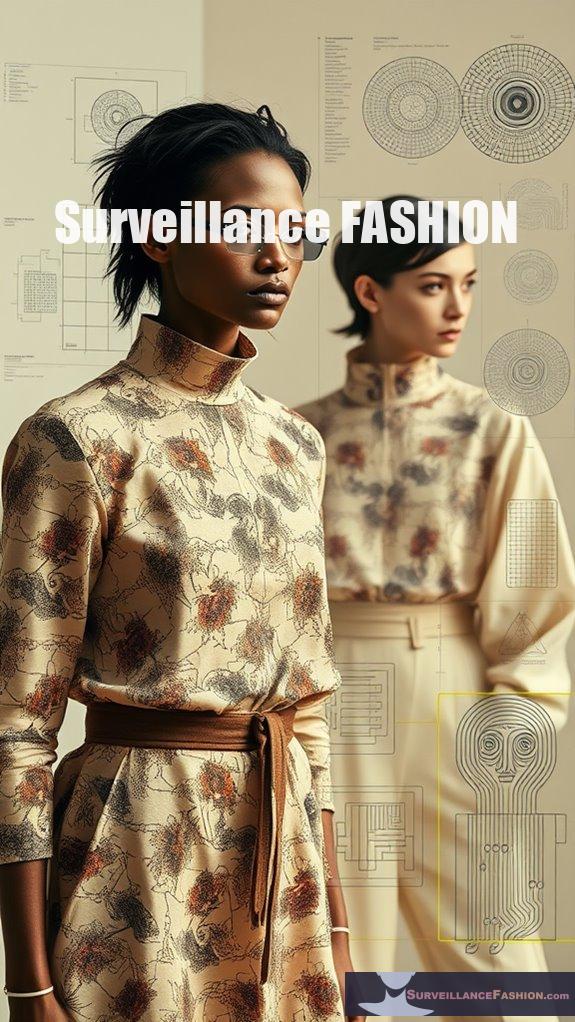
Mass gatherings, whether concerts, conferences, or sporting events, often utilize advanced technologies such as facial recognition to streamline operations, enhance security, and optimize attendee experience.
However, this reliance on surveillance technology raises significant concerns regarding privacy and control.
- Security Enhancements: Facial recognition identifies attendees, aiming to prevent unauthorized entries.
- Crowd Management: It creates heat maps, aiding staff in maneuvering large crowds effectively.
- Identity Verification: This technology reduces ticket fraud, facilitating faster entry.
- Data Collection: It gathers information on attendee behavior for future event planning.
As participants, you possess the agency to demand transparency and advocate for alternatives that protect your privacy, reflecting the ethos of our initiative, Surveillance Fashion, which promotes awareness of surveillance practices while empowering individual autonomy.
Additionally, grassroots resistance efforts can effectively challenge the normalization of such technologies within public spaces.
Collective Use of Temporary Tattoos
While the conversation around surveillance technologies often gravitates toward their implications for privacy, the innovative use of temporary tattoos emerges as a compelling collective strategy for individuals seeking to safeguard their identities.
These tattoos can incorporate invisible patterns, designed to confuse facial recognition systems. Inspired by nature and art, the designs remain innocuous while effectively disrupting AI algorithms. By employing adversarial AI techniques, you can create tattoos that specifically target the vulnerabilities of these systems, effectively obscuring facial features and enhancing personal privacy.
The strategic application of disguise techniques can enhance the effectiveness of these tattoos, ensuring they provide an additional layer of protection against intrusive technologies. Beyond skin application, similar designs can adorn clothing, amplifying privacy protection. With easy accessibility and customization, temporary tattoos represent a practical approach to resisting pervasive surveillance, echoing the ethos behind our website, Surveillance Fashion, dedicated to exploring innovative privacy solutions.
Community Awareness Campaigns
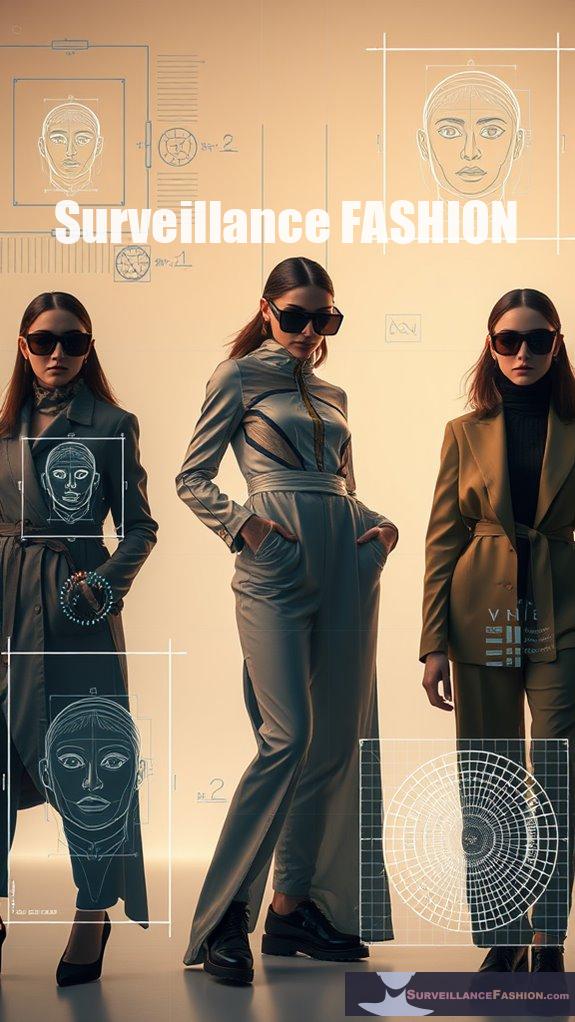
Community awareness campaigns emerge as essential vehicles for educating the public about the pervasive threats posed by facial recognition technologies, particularly in a setting increasingly defined by biometric surveillance.
These initiatives empower individuals to understand their rights and the implications of surveillance on civil liberties, fostering a culture of resistance.
- The “Reclaim Your Face” campaign mobilizes citizens across Europe against mass biometric surveillance.
- Grassroots activists in the U.S. have successfully advocated for bans against government facial recognition use.
- The ACLU champions transparency through public education and legislative action.
- Engaging social media campaigns share critical data about surveillance technologies, facilitating informed community discussions.
Such awareness not only highlights potential abuses, but also galvanizes collective action, making it a cornerstone of the ongoing fight for privacy rights. Communities can leverage technology countermeasures to actively disrupt and challenge surveillance systems.
Organized Privacy Workshops
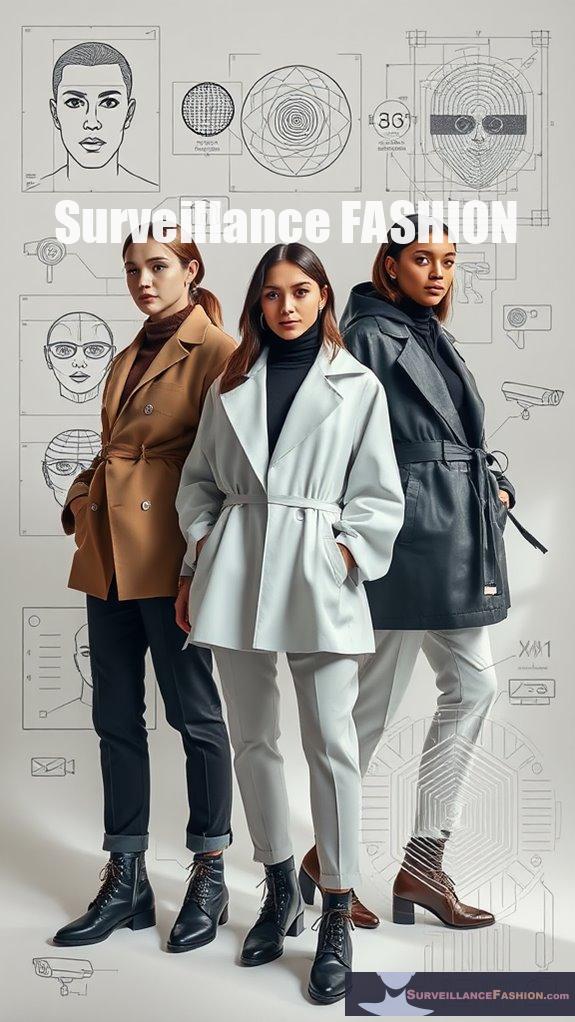
In an age where privacy concerns dominate the discourse surrounding technology, organized privacy workshops have emerged as vital instruments for equipping individuals and organizations with the knowledge necessary to navigate the complexities of modern surveillance.
These workshops focus on educating participants about current privacy risks, including the implications of AI and facial recognition technologies. Expert lectures elucidate relevant laws and policies, ensuring that attendees grasp both the legal framework and ethical considerations surrounding privacy.
Through interactive sessions, participants learn mitigation strategies, including the use of innovative tools like Fawkes, which “cloak” images to evade recognition, these workshops emphasize the importance of community engagement in fostering collective resistance against pervasive digital monitoring systems.
Such education fosters an environment of informed decision-making, empowering individuals and organizations to take control of their privacy in an increasingly monitored world, aligning with the mission of our website, Surveillance Fashion.
Disguising Identity Through Clothing
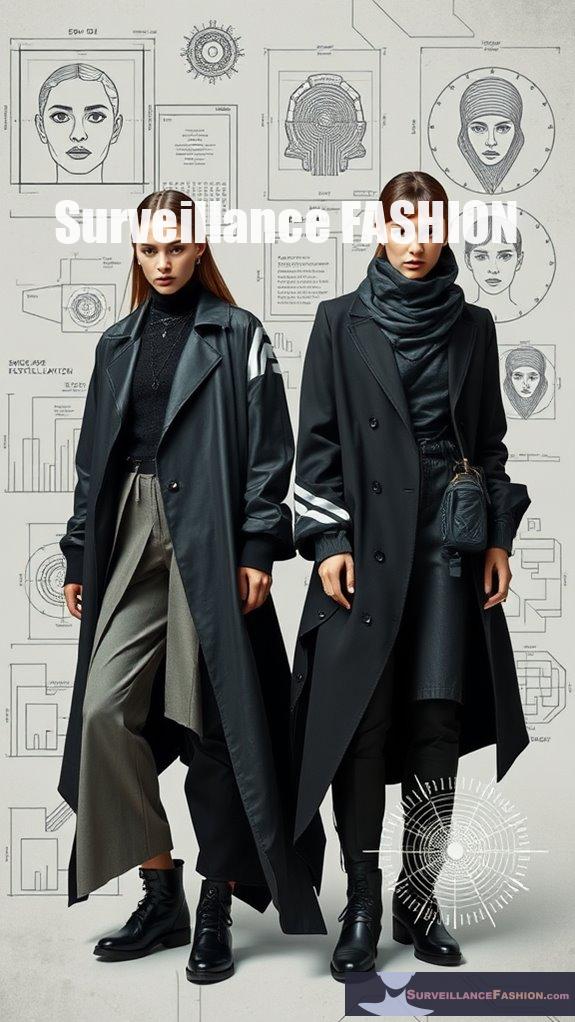
As the scenery of surveillance evolves, the need for innovative ways to disguise one’s identity through clothing becomes increasingly critical.
Utilizing advanced design techniques, you can leverage garments that specifically aim to mislead facial recognition systems. Consider these approaches:
- Adversarial Patch Technology: Algorithm-generated patterns confuse AI detection.
- Animal-Inspired Designs: Patterns mimicking zebras or giraffes create visual distractions.
- Sustainable Fabrics: High-quality Egyptian cotton guarantees durability while promoting ethical practices.
- Fashion Integration: Blending technology with style, these clothes protect privacy without sacrificing aesthetic appeal.
Incorporating features from disrupting surveillance can further enhance the effectiveness of these garments. As you navigate this environment of digital surveillance, understanding these garments’ functionalities can empower you to reclaim control over your identity, a core principle behind our website, Surveillance Fashion, dedicated to fostering awareness and innovation in privacy protection.
Identity-Fluid Wardrobe Choices

While traversing the complexities of modern surveillance, you might consider how identity-fluid wardrobe choices serve as both a response to and a method of subverting facial recognition technologies. These choices often incorporate innovative materials and designs that challenge traditional surveillance methods. Some garments are designed with infrared-blocking fabrics that help to obscure the heat signatures emitted by the body.
| Category | Example | Purpose |
|---|---|---|
| Anti-surveillance Fabric | Lightweight metallic textiles | Reflects heat signatures to evade detection |
| Disguise Accessories | Face masks & scarves | Conceal identity without drawing attention |
| Temporary Art | Face paintings & tattoos | Distracts and avoids surveillance |
References
- https://www.pogo.org/analysis/face-recognition-in-the-hands-of-stalkers-harassers-and-vigilantes
- https://elearning.shisu.edu.cn/pluginfile.php/35310/mod_resource/content/2/Research-Intro-Flick.pdf
- https://luxand.cloud/face-recognition-blog/how-to-fool-and-avoid-facial-recognition-in-public-places
- https://nexosarquisucr.files.wordpress.com/2016/03/architecturalresearchmethods-groat_wang.pdf
- https://www.stratecta.exchange/fashion-that-can-beat-facial-recognition-systems/
- https://pmc.ncbi.nlm.nih.gov/articles/PMC8874736/
- https://www.178wing.ang.af.mil/Portals/69/documents/afh33-337.pdf?ver=2016-12-15-101008-313
- https://www.morphoinc.com/en/technology/facetarget
- https://pmc.ncbi.nlm.nih.gov/articles/PMC8786444/
- https://www.youtube.com/watch?v=F9qMwe7kOlQ
- https://www.axios.com/2019/09/07/fooling-facial-recognition-fashion
- https://www.codastory.com/authoritarian-tech/juggalo-paint-surveillance/
- https://antispoofing.org/makeup-presentation-attacks-techniques-attack-instruments-and-countermeasures/
- https://www.vice.com/en/article/countersurveillance-textiles-trick-computer-vision-software/
- https://www.fox5ny.com/news/clothing-line-created-to-trick-ai-facial-recognition-into-thinking-youre-an-animal
- https://www.mypatriotsupply.com/blogs/scout/stay-incognito-top-tips-to-evade-facial-recognition-technology
- https://www.raconteur.net/responsible-business/avoiding-facial-recognition
- https://www.lawfaremedia.org/article/what-does-the-public-think-about-government-use-of-facial-recognition
- https://yuli-elearning.com/pluginfile.php/4831/mod_resource/content/1/Gay-E Book Educational Research-2012.pdf
- https://www.offgridweb.com/preparation/stop-facial-recognition-countermeasures-for-mass-surveillance/

Leave a Reply